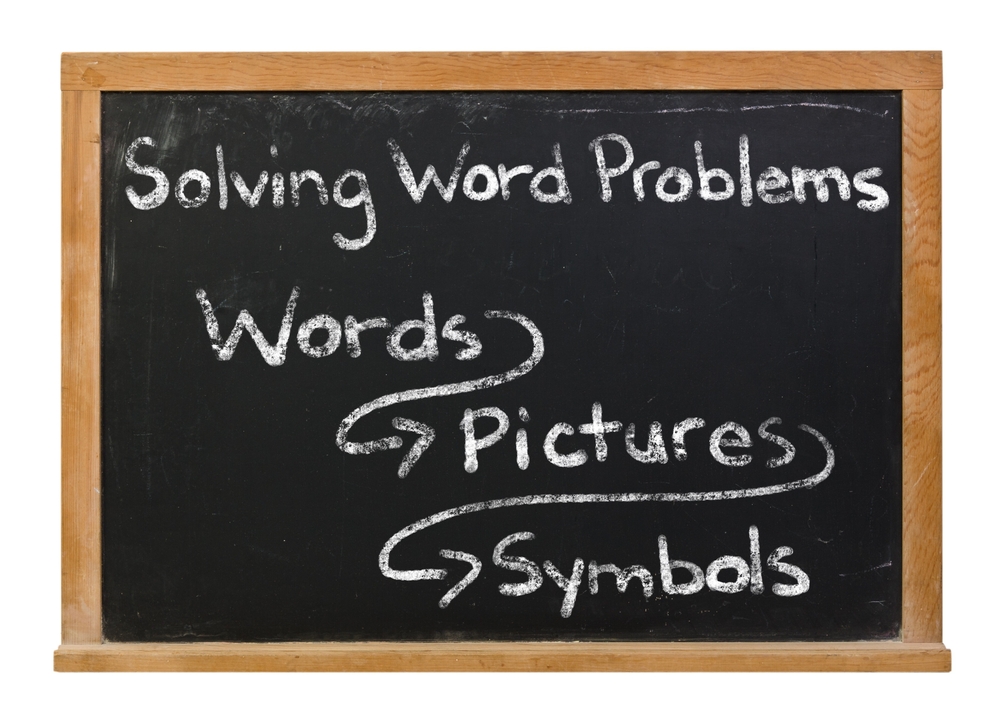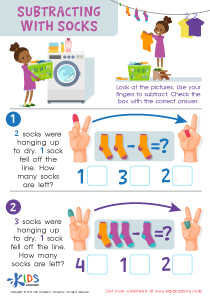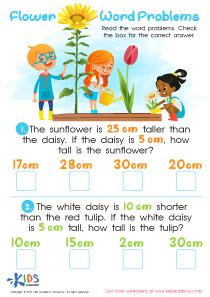Easy Addition and Subtraction Word Problems Worksheets for 3-Year-Olds
37 filtered results
-
From - To
Introducing our Easy Addition and Subtraction Word Problems worksheets, expertly designed for three-year-old children embarking on their learning journey. These worksheets are an ideal resource for homeschooling parents who seek to create a fun and engaging educational experience. Our interactive worksheets blend colorful visuals and simple, relatable scenarios to help little learners grasp basic math concepts effortlessly. Ideal for homeschool interactive worksheets, they cater specifically to young minds, encouraging them to explore numbers through intuitive and playful word problems. Start your child's math adventure with confidence and joy with our carefully crafted educational tools!
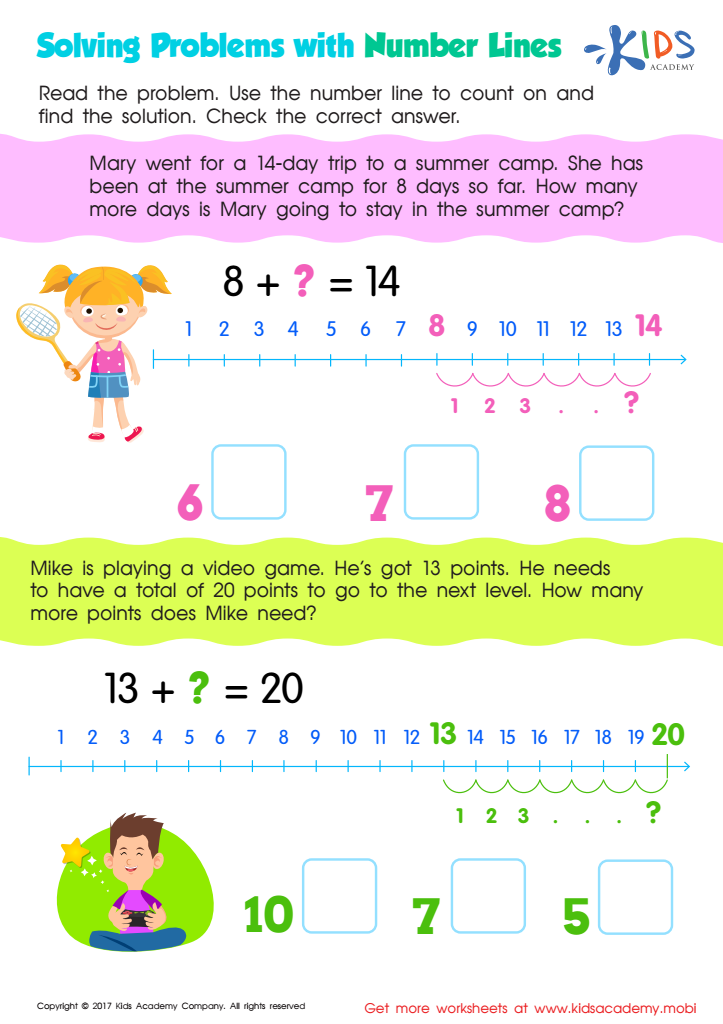

Solving Problems: Number Lines Worksheet
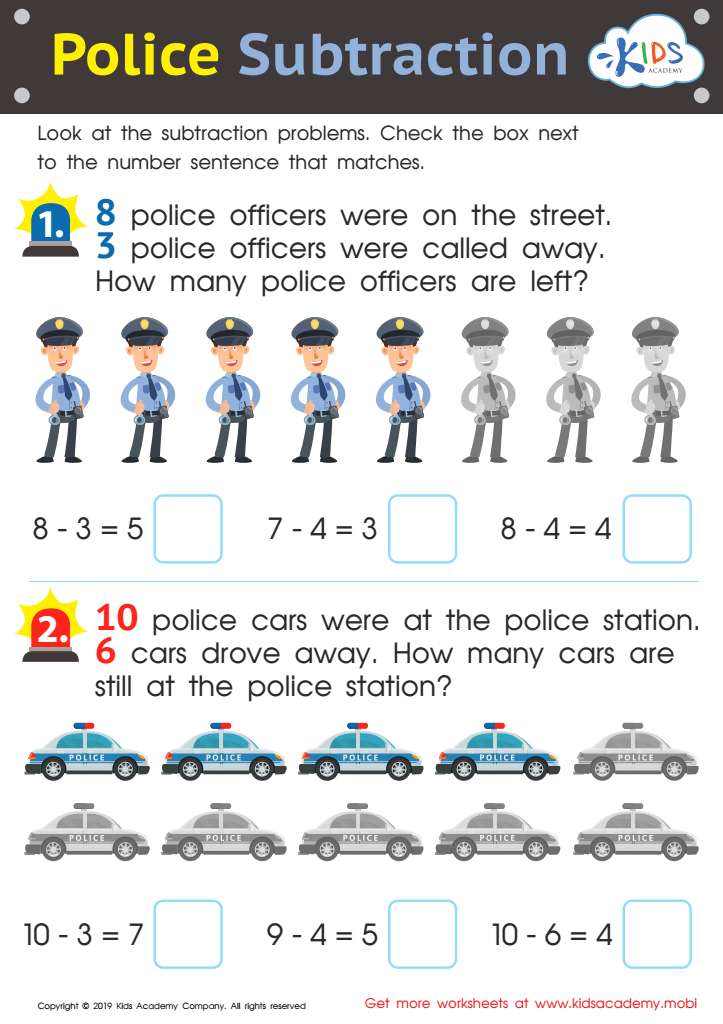

Police Subtraction Worksheet
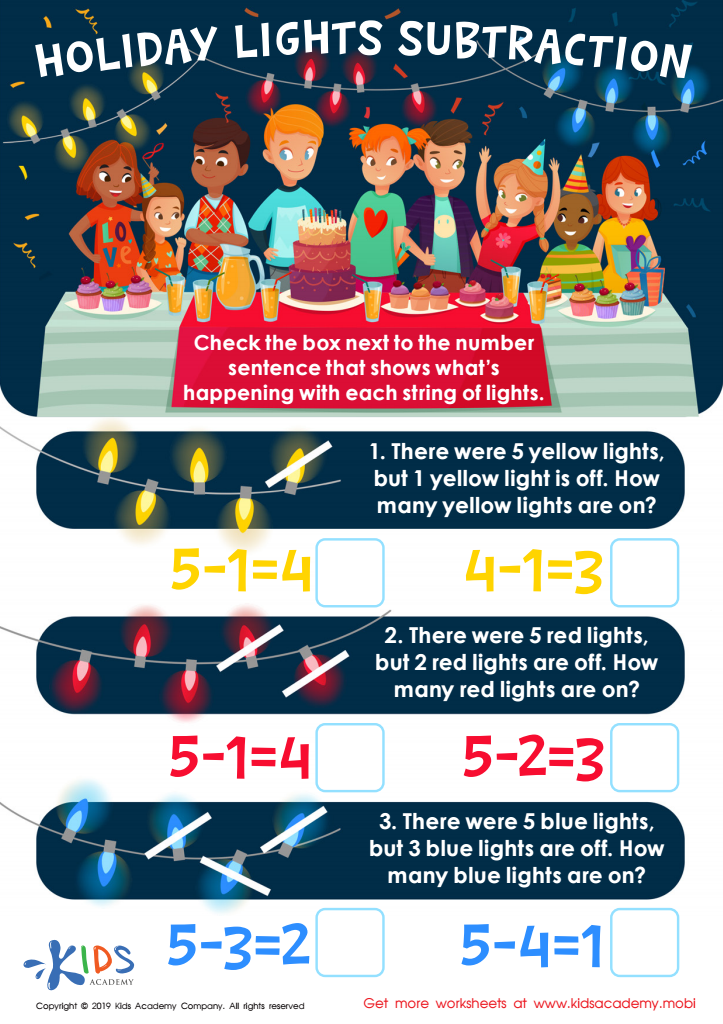

Holiday Lights Subtraction Worksheet
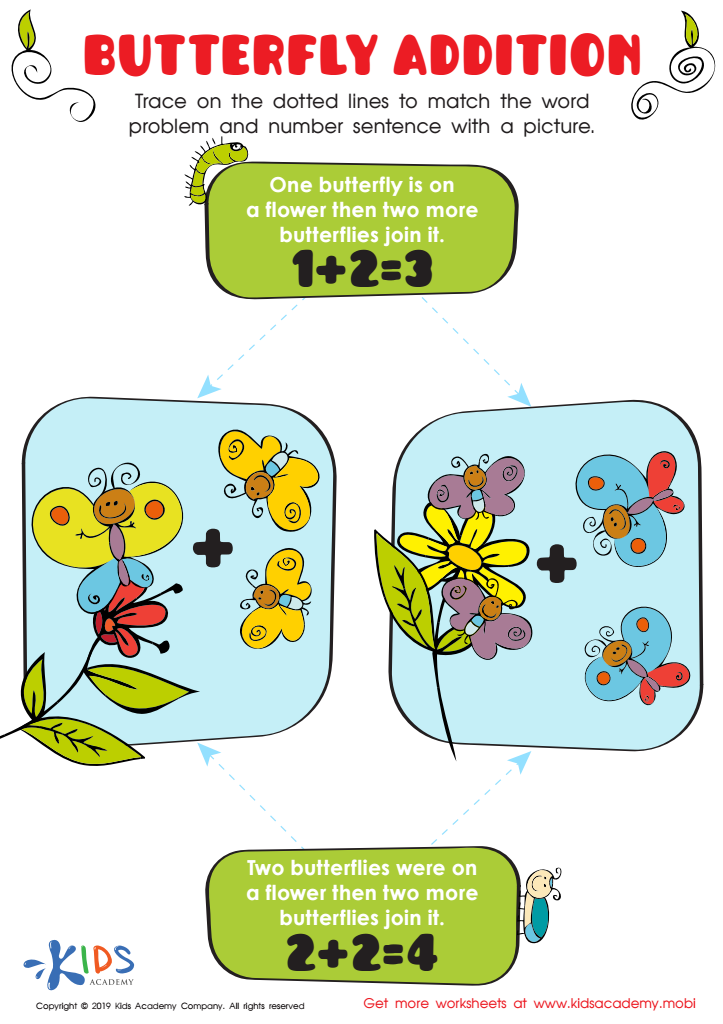

Butterfly Addition Worksheet
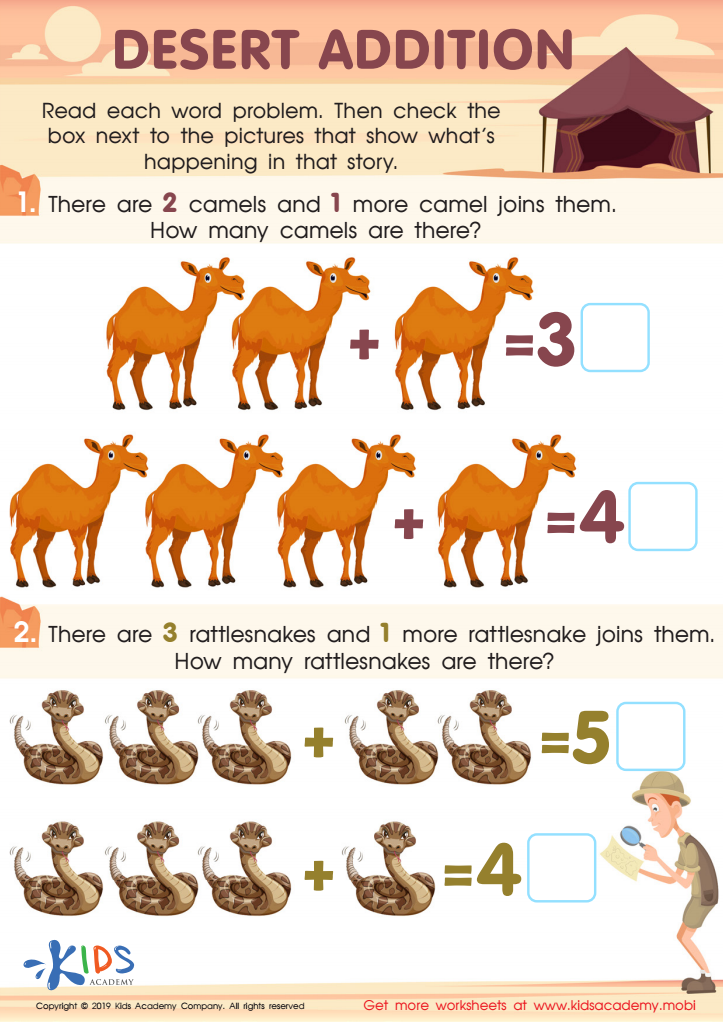

Desert Addition Worksheet


Amusement Park Word Problems Worksheet


Subtracting Socks Worksheet
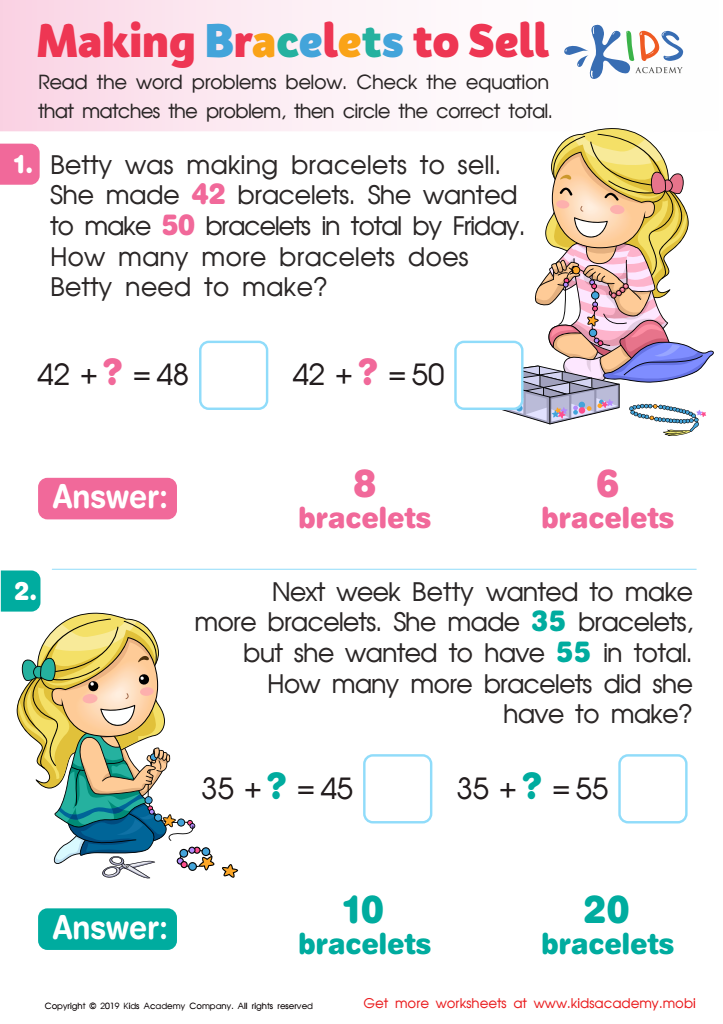

Making Bracelets to Sell Worksheet
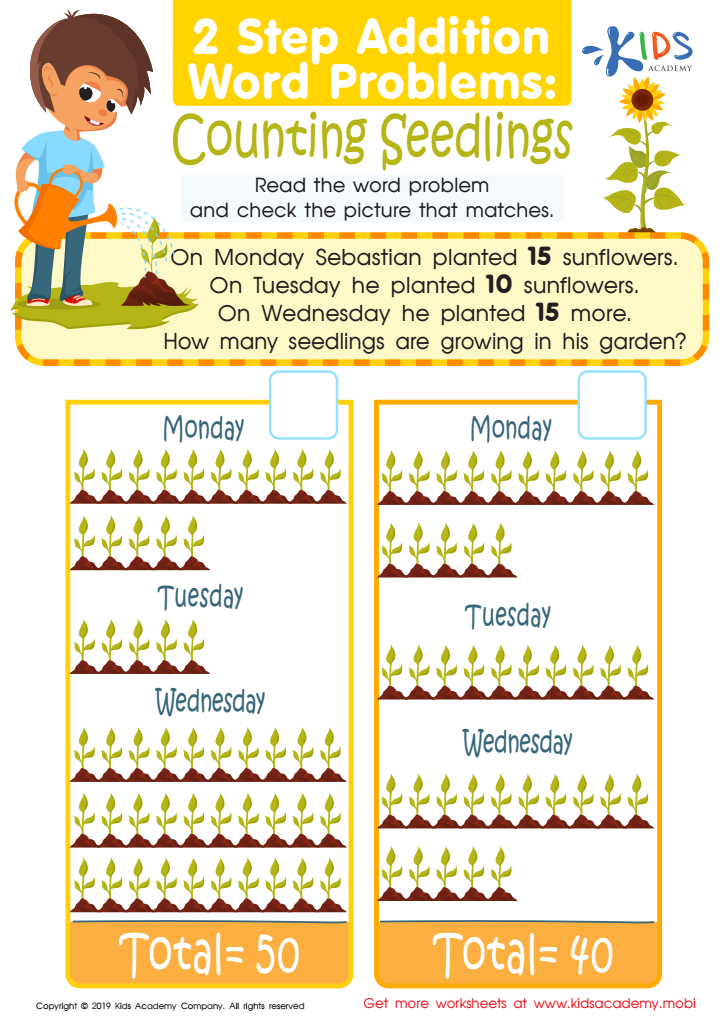

Counting Seedlings Worksheet
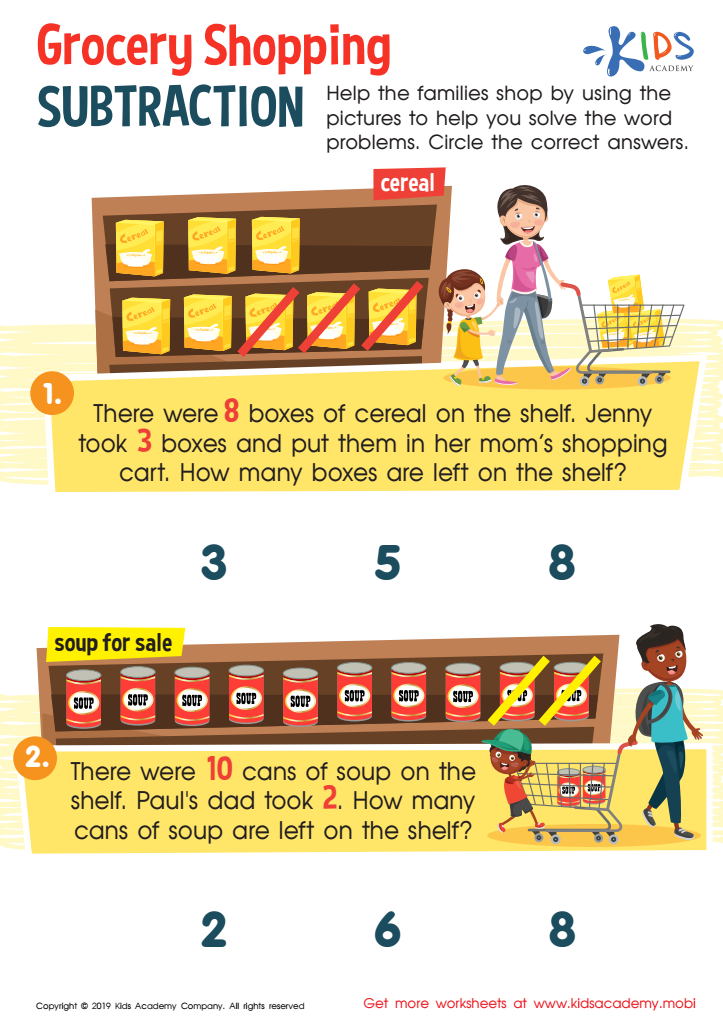

Grocery Shopping Subtraction Worksheet
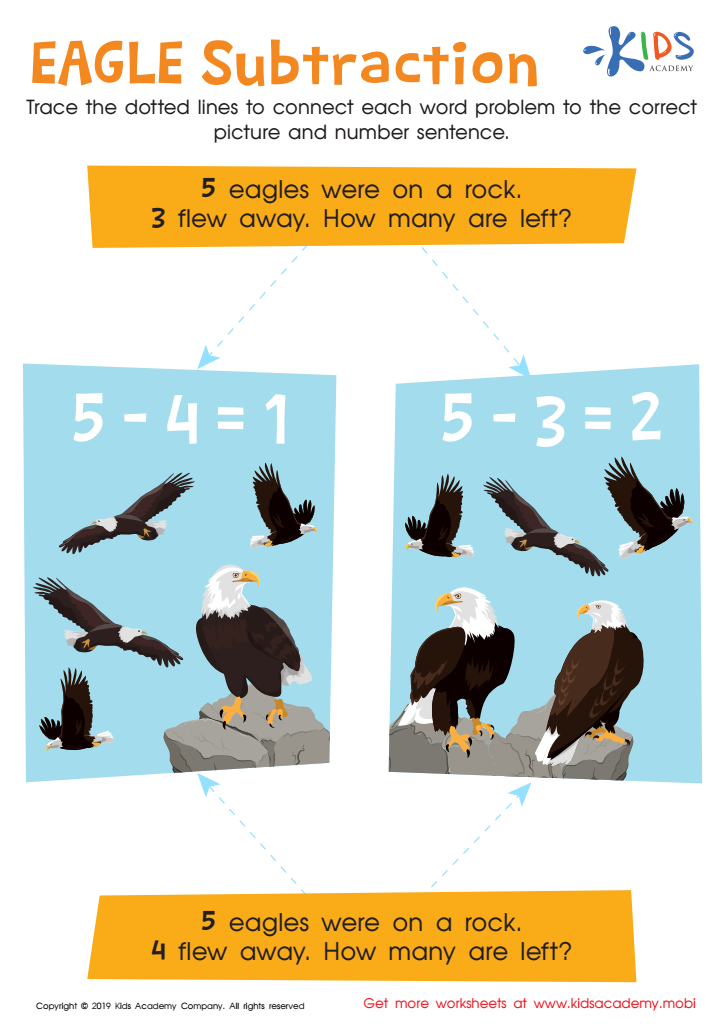

Eagle Subtraction Worksheet


Instrument Subtraction Worksheet
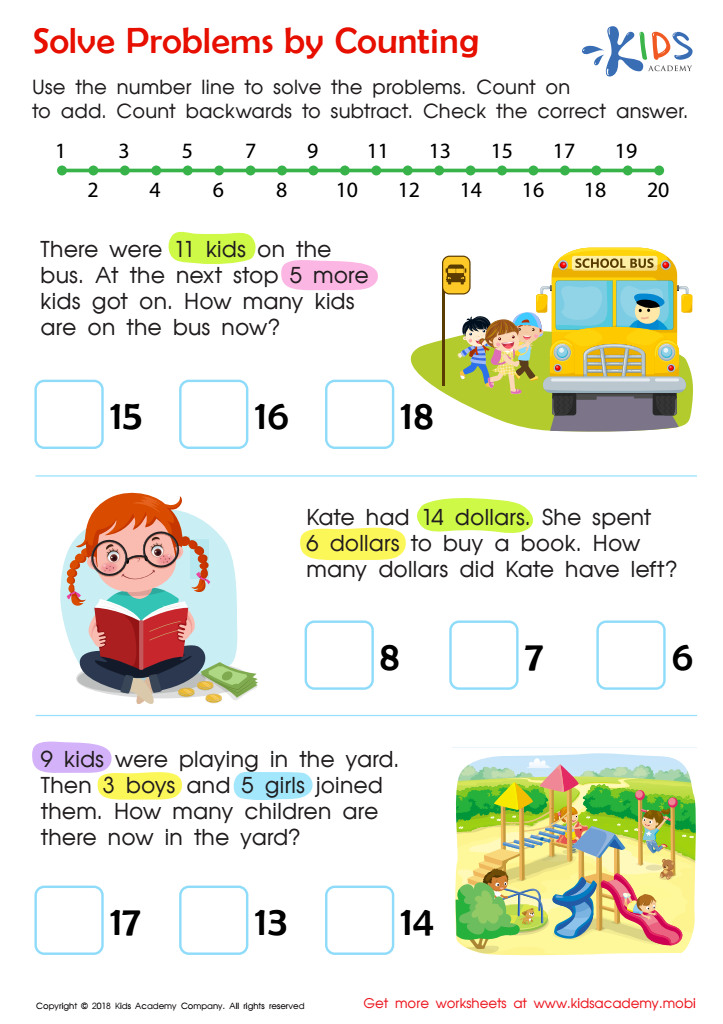

Solve Problems by Counting Worksheet
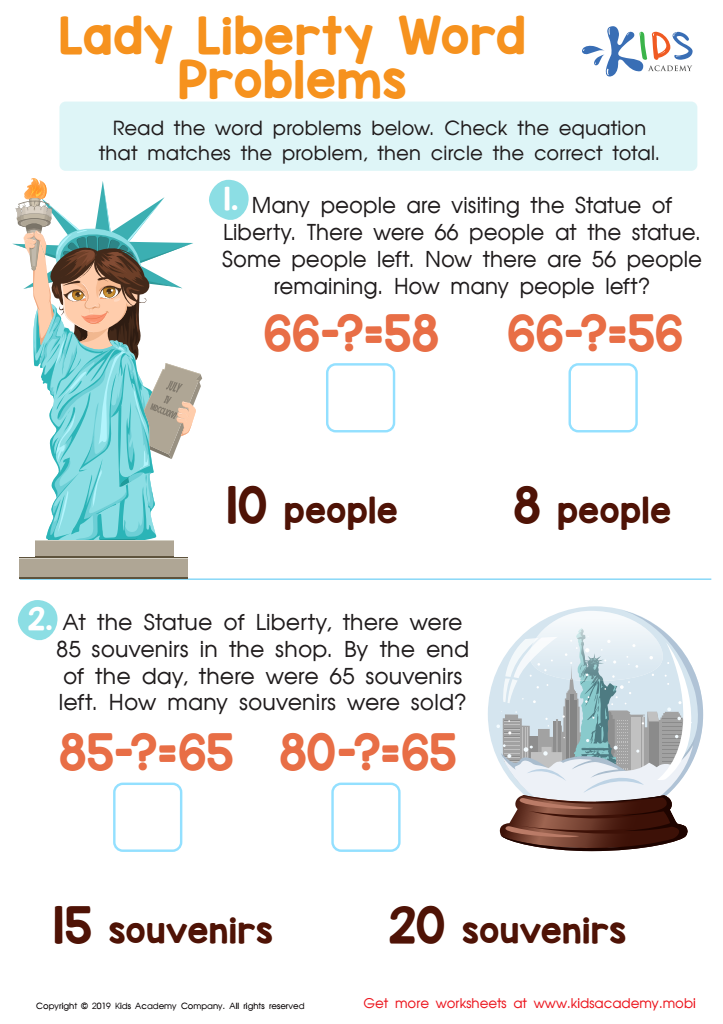

Lady Liberty Worksheet
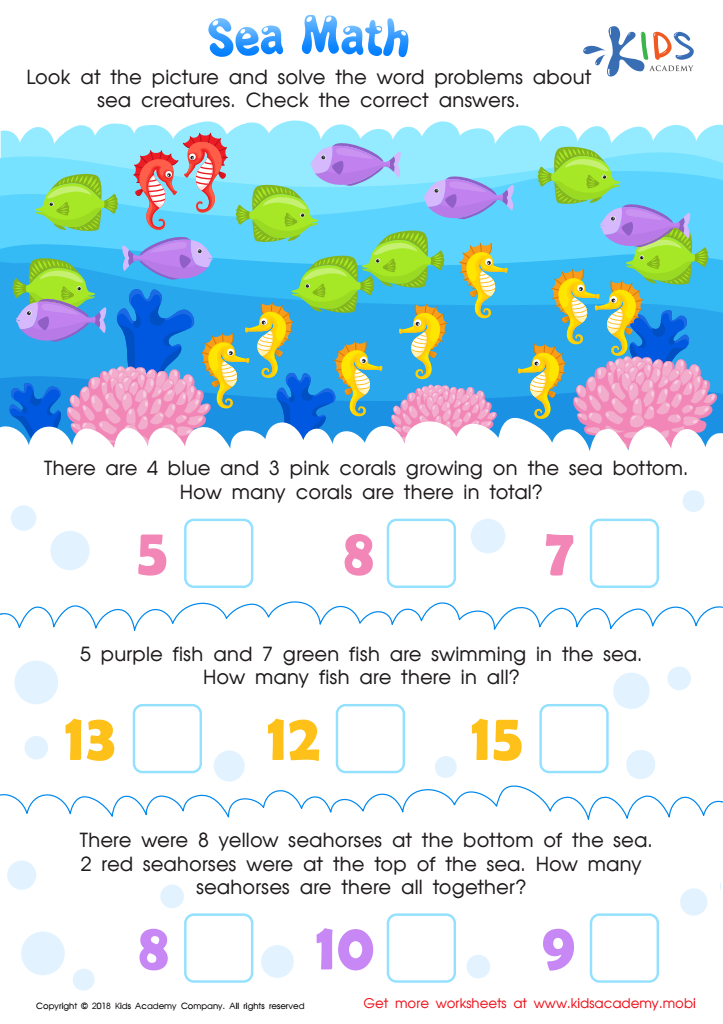

Sea Math Worksheet
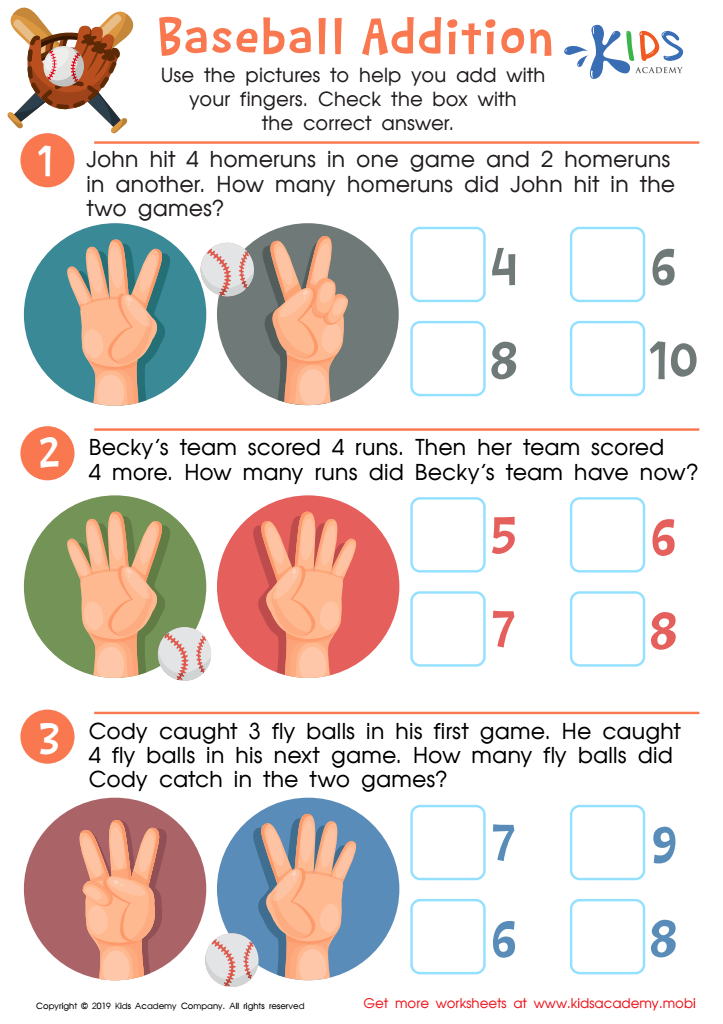

Baseball Addition Worksheet
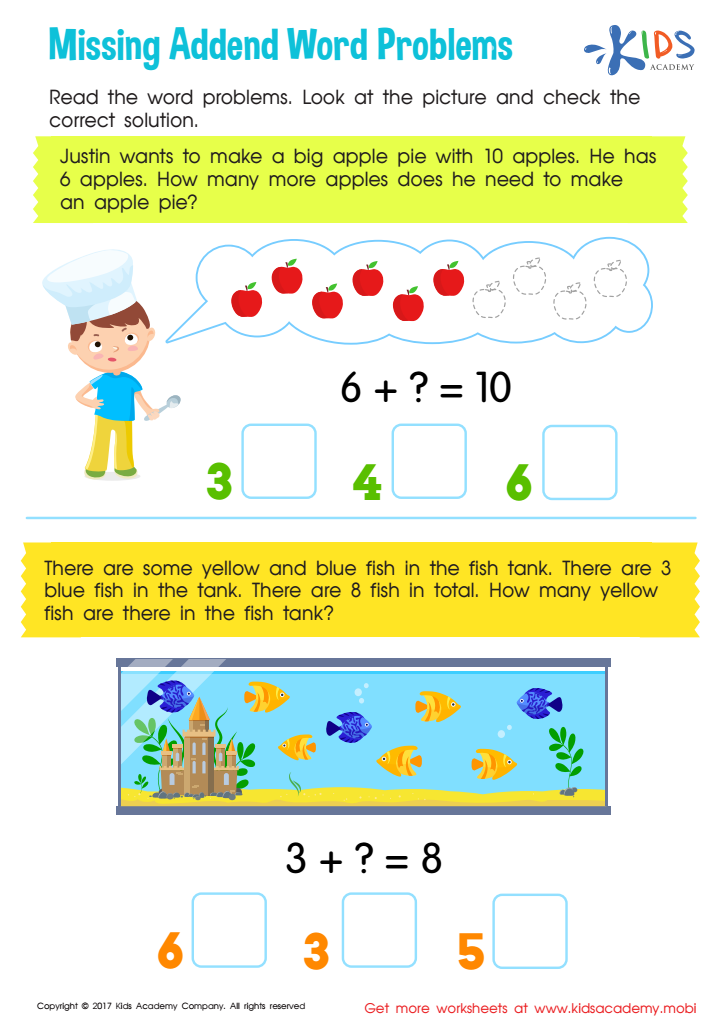

Missing Addend Word Problems Worksheet


Adding Up with Old MacDonald Worksheet


Under the Sea Addition Worksheet
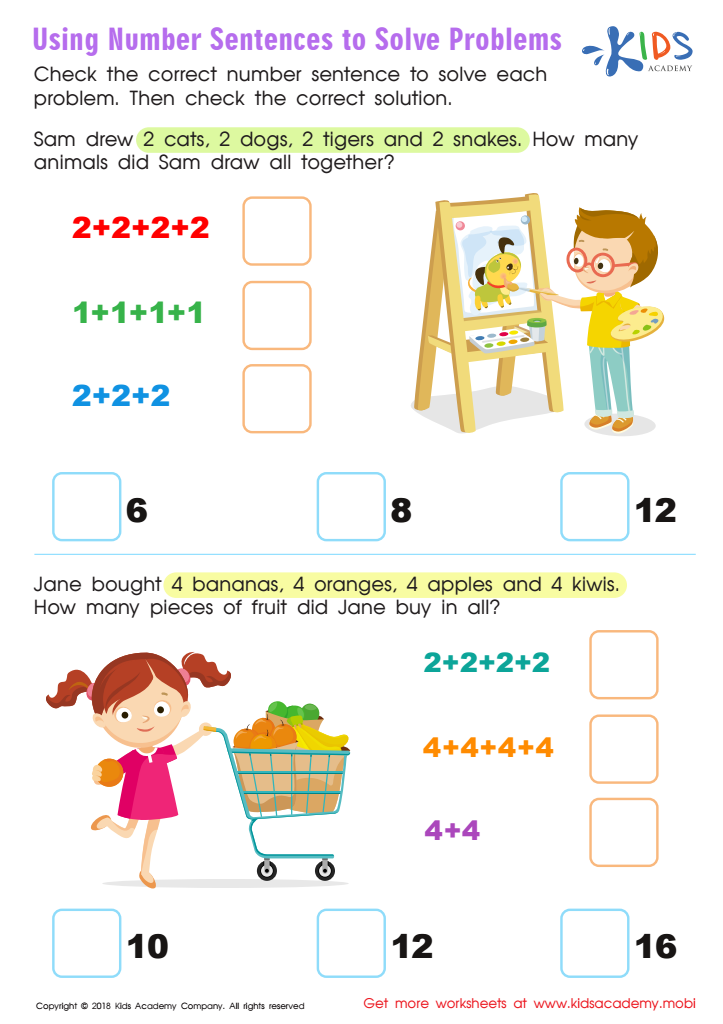

Using Number Sentences to Solve Problems Worksheet
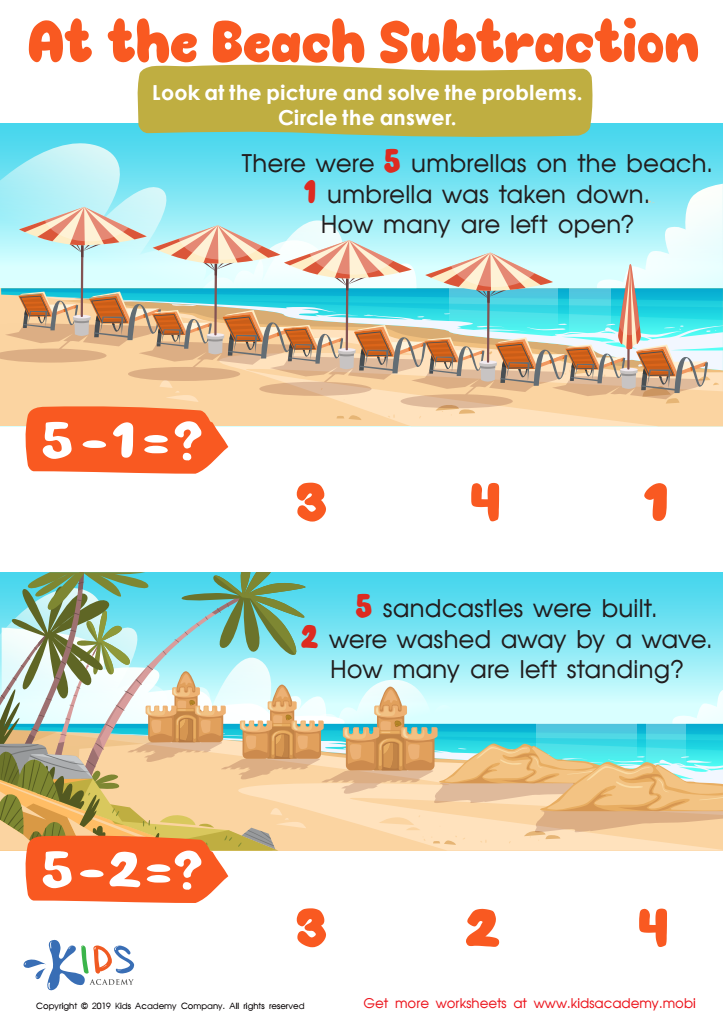

At the Beach Subtraction Worksheet
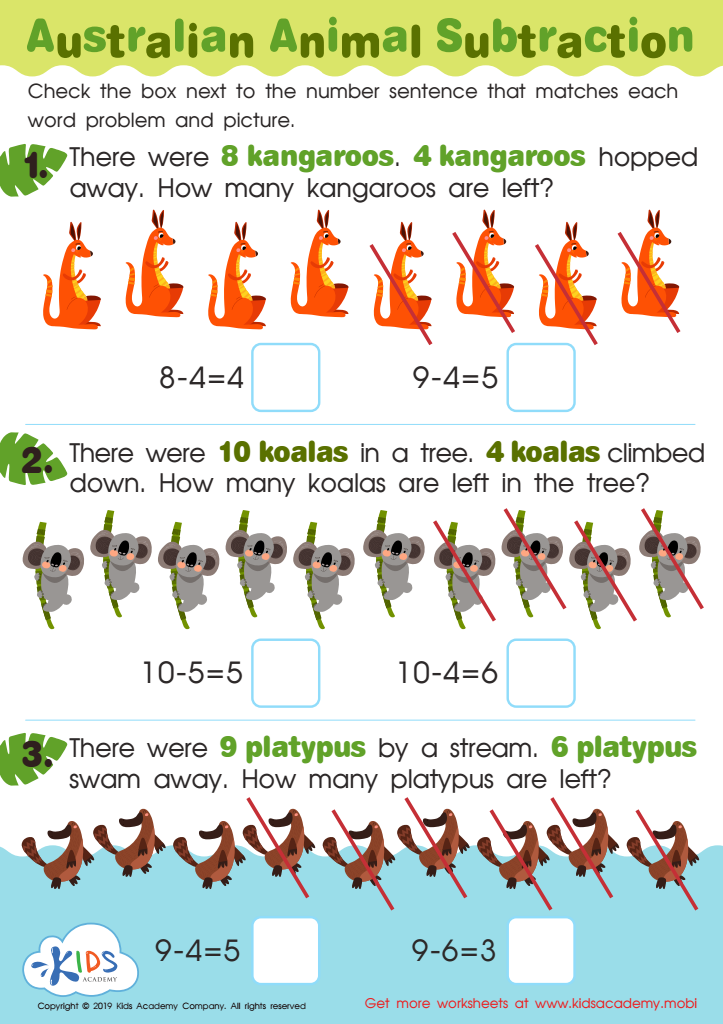

Australian Animal Subtraction Worksheet
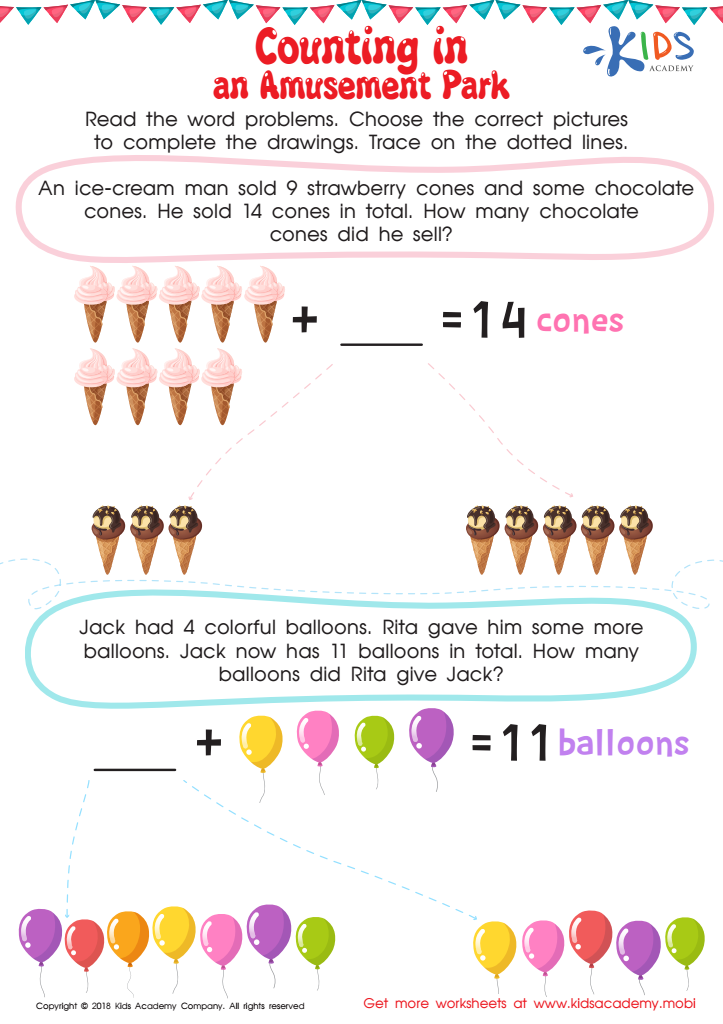

Counting in an Amusement Park Worksheet
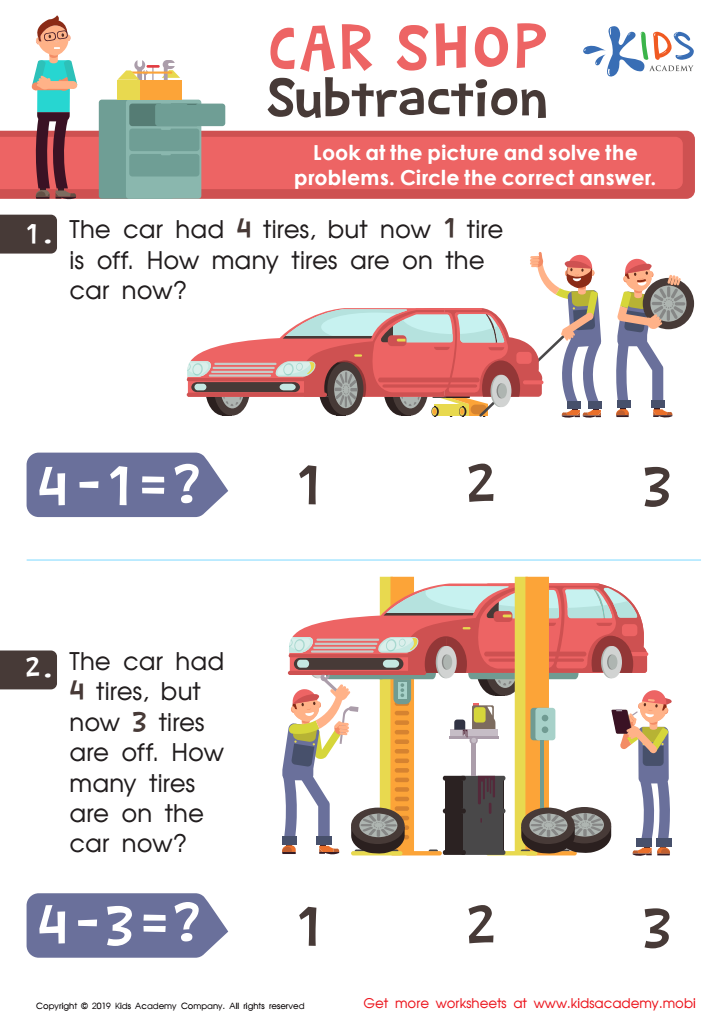

Car Shop Subtraction Worksheet
The Value of Easy Worksheets on Addition and Subtraction Word Problems for Three-Year-Olds: Embracing Homeschool Interactive Printables
In the early stages of childhood education, particularly around the age of three, the foundation for numerical skills begins to take shape. During this critical period, engaging young learners with the right tools and methods can spark an interest in mathematics that lasts a lifetime. One effective approach to nurturing this foundational mathematical understanding is through easy worksheets focused on addition and subtraction word problems, especially tailored for this age group. Moreover, incorporating homeschool interactive printables into this learning process enhances the educational experience, making it both fun and effective.
Why Focus on Addition and Subtraction Word Problems?
Addition and subtraction are basic arithmetic operations that are essential in everyday life. Introducing these concepts through word problems helps children to see math as more than abstract numbers; it becomes a tool to solve real-world problems. For a three-year-old, word problems simplified into familiar contexts—such as adding apples in a basket or subtracting cookies from a jar—can make these concepts more relatable and easier to understand.
Simple word problems help children develop not just counting skills but also critical thinking and problem-solving skills as they relate these scenarios to their own experiences. This early math literacy sets the stage for more complex mathematical learning and application in later years.
Enhancing Learning with Homeschool Interactive Printables
Homeschooling offers a unique opportunity to tailor educational content to the specific learning style and pace of a child. Interactive printables are a fantastic resource within the homeschool environment, especially for engaging young learners. These materials typically involve more than just looking and writing; they invite children to cut, paste, color, and move pieces around, which suits the dynamic learning style of young children perfectly.
Interactive printables make learning tactile, which is particularly effective for preschool-aged children who learn best through hands-on activities. By transforming a simple math worksheet into an interactive activity, parents and educators can keep children engaged, enhance their motor skills, and reinforce their understanding of mathematical concepts through physical interaction and visualization.
The Role of Easy Worksheets in Early Childhood Development
Easy worksheets on addition and subtraction word problems, designed specifically for three-year-olds, play a vital role in early childhood development. They help in:
-
Building Confidence: Simple successes in solving problems can boost a child’s confidence immensely. Easy worksheets provide a platform for numerous small wins that encourage continued effort and interest in learning.
-
** Developing Numerical Skills: At three, children are just beginning to understand the concept of numbers and their values. Easy word problem worksheets teach them to associate numbers with actual objects or outcomes, which solidifies their grasp of basic arithmetic.
-
Enhancing Comprehension Skills: Even at a young age, children can start developing comprehension skills. Word problems require a child to listen or read a scenario, understand it, and figure out what is being asked. This not only aids in their math skills but also improves general comprehension and cognitive abilities.
-
Encouraging Logical Thinking: Simple addition and subtraction problems introduce the basics of logical thinking as children determine which actions (adding or subtracting) need to be taken to solve a problem. This foundational skill in reasoning is crucial in all areas of learning and decision-making as they grow.
-
Promoting Interaction and Bonding: Homeschool interactive printables allow for a more engaged interaction between the child and the parent or educator. This shared activity can strengthen bonds and provide a fun, collaborative way to learn, making the educational experience enjoyable and memorable.
Incorporating Technology and Interactivity
In the digital age, even preschool learning benefits from the integration of technology. Interactive printables can sometimes be digital, incorporating sounds, animations, and interactive elements that can be manipulated through a screen. This type of interactivity can captivate young minds and cater to varied learning styles, making digital homeschool resources a valuable addition to traditional print-based activities.
Moreover, these printables often come with instructions and suggestions for parents on how to effectively use them in teaching, making it easier for parents without formal teaching experience to guide their children effectively.
Conclusion
In conclusion, easy worksheets on addition and subtraction word problems are more than just simple educational tools; they are pivotal in building the early mathematical foundation needed by every child. When these are combined with the engaging, tactile, and interactive elements of homeschool interactive printables, they create a rich, enjoyable, and effective learning environment. For three-year-olds, who are naturally curious and eager to explore the world around them, these resources can turn learning into an exciting adventure filled with discovery and joy. Thus, embracing these tools not only supports academic growth but also nurtures a lifelong love for learning.
 Assign to My Students
Assign to My Students








